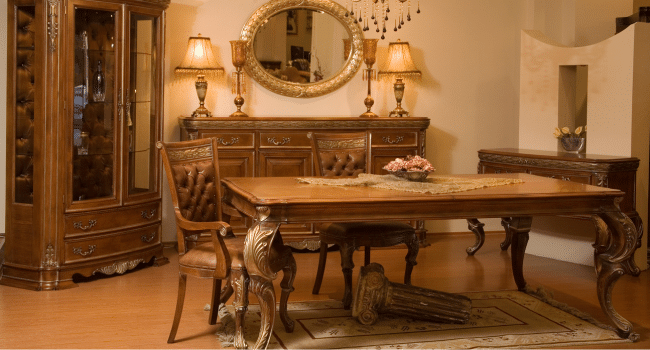Table of Contents
Introduction to Restored Furniture
Restored furniture has grown increasingly popular in recent years, reflecting a broader interest in sustainability and the charm of vintage design. Unlike mass-produced modern pieces, restored furniture carries a story, often showcasing craftsmanship that has endured decades or even centuries. Whether it’s a weathered oak chair, a classic Victorian dresser, or a mid-century modern table, restoring furniture allows homeowners to preserve history while adding character to their living spaces.
The Art of Furniture Restoration
Restoring furniture is both an art and a science. It involves careful attention to detail, knowledge of materials, and an appreciation for the original design. The process may include sanding down old finishes, repairing structural damage, replacing worn hardware, and refinishing surfaces to bring the piece back to life. Skilled artisans often combine traditional techniques with modern methods to ensure the furniture is functional, durable, and aesthetically pleasing. This meticulous approach not only revives the furniture but also enhances its intrinsic value.
Benefits of Choosing Restored Furniture
There are numerous advantages to selecting restored furniture over buying new. First, it is environmentally friendly. By giving old furniture a second life, we reduce waste and the demand for raw materials, which helps minimise the environmental impact associated with manufacturing new pieces. Second, restored furniture is often unique. Unlike contemporary mass-produced items, each restored piece has its own story, with distinctive marks and textures that cannot be replicated. Third, investing in restored furniture can be cost-effective. While some restoration projects can be pricey, many times they offer a more affordable way to acquire high-quality, solid wood furniture compared to buying brand-new equivalents.
Styles and Trends in Restored Furniture
Restored furniture comes in an array of styles, catering to both traditional and modern tastes. Rustic and shabby-chic pieces often appeal to those who enjoy a lived-in, cozy aesthetic. Meanwhile, sleek mid-century modern restorations attract fans of minimalist design with clean lines and functional elegance. Some restorers even combine elements from different eras, creating hybrid pieces that are both contemporary and nostalgic. The versatility of restored furniture makes it suitable for a wide range of interiors, from classic cottages to urban lofts.
DIY vs. Professional Restoration
Many enthusiasts enjoy the hands-on experience of restoring furniture themselves. DIY restoration allows individuals to personalise pieces and experiment with finishes, stains, and hardware choices. However, not all projects are suitable for amateurs. Antique or valuable furniture may require professional intervention to ensure that its integrity and value are preserved. Professional restorers bring expertise in techniques such as veneer repair, French polishing, and structural reinforcement. They can also advise on appropriate materials and finishes, guaranteeing that the restored furniture not only looks beautiful but also lasts for years to come.
Caring for Restored Furniture
Once a piece of furniture has been restored, proper care is essential to maintain its beauty and functionality. Regular dusting, avoiding prolonged exposure to direct sunlight, and using coasters or protective pads can prevent wear and tear. For wooden pieces, occasional polishing with appropriate oils or waxes helps preserve the finish. Upholstered items should be vacuumed and spot-cleaned according to the fabric type. With careful maintenance, restored furniture can continue to enhance a home’s aesthetic for decades, offering both utility and timeless appeal.
Where to Find Restored Furniture
Restored furniture can be found in specialised shops, online marketplaces, and local auctions. Many restoration businesses showcase their work on websites, making it easy for customers to explore available pieces. For those seeking professional restoration services, restored furniture experts can provide guidance on both sourcing and restoring items to meet specific needs and preferences. This ensures that each piece purchased is not only visually stunning but also structurally sound and ready for daily use.
Conclusion
Restored furniture embodies a perfect blend of history, craftsmanship, and sustainability. Its unique character, combined with the environmental and financial benefits of giving old items a new lease on life, makes it an appealing choice for modern homeowners. Whether opting for a DIY project or seeking professionally restored pieces, incorporating restored furniture into your home allows you to celebrate the artistry of the past while creating a personalised, timeless interior.
